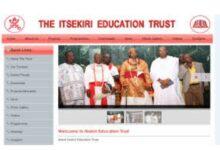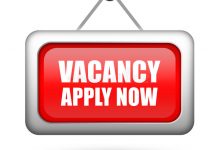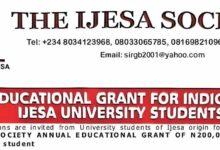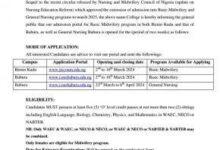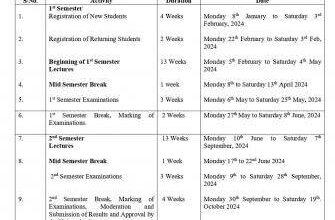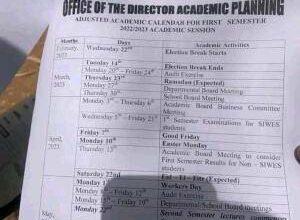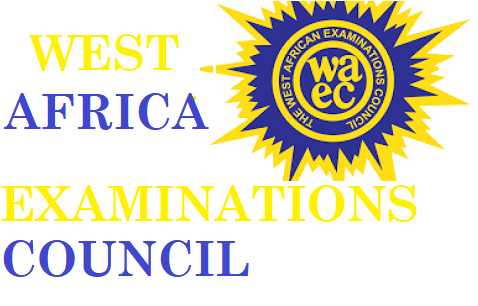
WAEC Syllabus for Auto Mechanics
WAEC Syllabus for Auto Mechanics. WAEC Syllabus for Auto Mechanics is available for all candidates who wants to participate in the examination. The West African examination council (WAEC) has officially introduced a syllabus that will guide all the WAEC candidates who wish to write the WAEC examination this year. For a very successful WAEC Auto Mechanics examination for this year, you need to check out the available areas of concentration. It has been divided into sections with chapters, followed by the topics covered. Inside the below WAEC agricultural syllabus, you will also see the format of how the WAEC Auto Mechanics questions will look like. Jamb form
There are always 3 sections to answer questions from. Paper 1 to 3 contains multiple essay questions. Where paper one (1) carries 50 marks; paper two (2) carries 90 marks while paper three (3) carries 60 marks. WAEC Syllabus for Auto Mechanics
👉 Relocate to Canada Today!
Live, Study and Work in Canada. No Payment is Required! Hurry Now click here to Apply >> Immigrate to Canada
This WAEC syllabus is for both the O’level WAEC and General Certificate Examination (GCE) candidates. Final year students in the senior secondary school level and external candidates are eligible to make use of this syllabus and prepare ahead of the examination.
See the full detailed information concerning the WAEC Auto Mechanics Syllabus below.
SCHEME OF EXAMINATION
There will be three papers, Papers1, 2 and 3 all of which must be taken. Papers 1 and 2 shall be a composite paper to be taken at one sitting.
PAPER 1: will consist of forty multiple-choice objective questions all of which are to be answered in 1 hour for 40 marks. Npower Recruitment
PAPER 2: will consist of five essay questions. Candidates will be required to answer any four questions in 1½ hours for 60 marks. Pounds to Naira
PAPER 3: will consist of two practical tests both of which must be carried out by candidates in 2 hours for 100 marks.
For the practical test, schools will supply materials needed locally.
👉 Relocate to Canada Today!
Live, Study and Work in Canada. No Payment is Required! Hurry Now click here to Apply >> Immigrate to CanadaEXAMINATION SYLLABUS
| S/NO. | TOPIC | THEORY | PRACTICAL |
| 1 | WORKSHOP REGULATIONS AND SAFETY |
1.1 Instructions in basic safety rules relating to personnel, tools, equipment and environment.
1.2 Types of fire extinguishers. Foam, dry powder, sand, water and wet-blanket types |
1.1.1 Identification and use of various safety devices e.g. aprons, goggles, shield, etc.
1.2.1 Demonstration/use of fire extinguishers. |
| 2 | BASIC TOOLS, INSTRUMENTS AND EQUIPMENT | 2.1 Use of basic tools e.g. hand tools and power
tools. 2.2 Use of measuring instruments
2.3 Use of basic equipment e.g. jacks, hoist, air- compressors, etc. |
2.1.1. Identification and use of basic tools.
2.2.1 Identification and use of measuring instruments. 2.3.1 Identification and use of basic equipment. |
| 3 | LAYOUT OF A
MOTOR VEHICLE |
3.1 Layout of a conventional motor vehicle.
3.2. Functions of the main components. 3.3 Drive arrangements: Front engine rear-wheel drive, rear-engine rear-wheel drive, front-engine front-wheel drive, four-wheel drive. |
3.1.1 Inspection of the
layout of a motor vehicle. 3.2.1 Identification of the main components. 3.3.1 Inspection of the drive arrangements. |
| 4 | ENGINE
(a) Main Components
(b) Principles of operation.
(c) Types of engine
(d) Crank arrangement and firing order.
(e) Valve- operating mechanism |
4.1 Classification of engine (petrol and diesel engine) and their main parts. Jamb Result
4.2 Arrangement and functions of the main components: Cylinder head and cover; cylinder block, crankshaft, flywheel, connecting rod, piston and rings, spark plug (petrol) fuel injection pump and injector (diesel), valve, valve springs, oil seal, camshaft, push rod, rocker shaft/arms.
4.3 Two-stroke and four stroke cycle petrol and diesel engine.
4.4 Advantages and disadvantages of petrol and diesel engines.
4.5 Single and multi-cylinder engines.
4.6 Crank arrangement and firing orders: 2, 4 and 6 cylinder in-line engines. V-4,V-6 and 4-cylinder horizontally-opposed engines.
4.7 Functions and operation of valve operating mechanisms. Drives layout, main components, 4-cylinder 12 – and 16 – valve engine. Valve timing including calculation of valve opening and closing periods. |
4.2.1 Identification of main components.
4.2.2 Decarbonization of cylinder head.
4.3.1 Identification of two and four stroke engines.
4.5.1 Inspection and classification of engines according to cylinders. 4.5.2 Compression test. 4.5.3 Measurement of the bore and crank- journals for wear.
4.6.1 Determination of firing order through valve opening. 4.6.2 Fault diagnosis.
4.7.1 Identification of main components. 4.7.2 Valve adjustments. 4.7.3 Fault diagnosis. |
| 5 | FUEL SUPPLY SYSTEMS | 5.1 Fuels and combustion:
elements of combustion; air-fuel ratios; types and properties of fuel-petrol and diesel.
5.2 Petrol: Layout and operation of petrol supply system-gravity and force-feed systems: simple carburetor, multi-jet carburetor. Air filters/cleaners. Mechanical and electrical fuel pumps. Advantages and disadvantages.
5.3 Petrol-injection system: Merits and demerits. Electronic Fuel (Petrol) injection (EFI).
5.4 Diesel: Layout of a diesel supply system: elementary treatment of injection pumps and injectors. Cold starting devices. |
5.1.1 Checking fuel
system troubles. 5.1.2 Inspection of exhaust gases for normal air-fuel ratios and excessively worn engine.
5.2.1 Inspection layout of petrol supply system: dismantling, examination and reassembling of a mechanical fuel pump.
5.2.2 Fault diagnosis.
5.2.3 Dismantling, inspection and reassembling of carburetors. 5:3:1 Identify the main components
5.4.1 Inspection of various types of injection pumps, servicing of injectors and bleeding.
|
| 6 | EXHAUST SYSTEM | 61 Purpose and layout of the system. Types of silencers and manifolds.
|
6.1.1 Inspection of exhaust system and identification of the exhaust and inlet manifolds.
6.1.2 Checking the system for leakage. |
| 7 | LUBRICATION | 7.1 Engine Lubrication:
Reasons for lubrication and types: boundary layer and film lubrication. Lubricated parts and components.
7.2 Types of feed-splash, forced and petrol. (Wet and dry). Principle of operation of gear and rotor oil pumps. Oil filters.
7.3 Lubricants: Applications in engines, transmission, steering, suspension system and doors: Viscosity rating, SAE numbers. |
7.1.1 Identification of main components.
7..2.1 Changing of oil and oil filters.
7.2.2. Servicing and testing of pumps
7.2.3 Fault diagnosis
7.3.1. Identification of different types of lubricants. Comparing fresh and used oil. Use of grease gun and oil can. |
| 8 | COOLING SYSTEM | 8.1 Process of heat transfer.
8.2 Water Cooling System: Purpose and layout of the system: functions of main components. Thermo-syphon and pump assisted systems. Elementary treatment of pressurized cooling system.
Thermostats: Purpose and types. (bellows and wax pellet).
8.3 Air Cooling System: Layout and functions of the system: main components. Comparison of the air and water-cooled systems. |
8.2.1 Identification of main components, an inspection of the radiator and its construction, replacement of fan belt and hoses.
8.2.2 Flushing.
8.2.3 Fault diagnosis.
8.3.1 Fault diagnosis.
|
| 10 | TRANSMISSION SYSTEM
(a) Layout
(b) Clutch Assembly
(c) Gearbox
(d) Propeller shaft and universal joint.
(e) Rear Axle
|
9.1 Function and layout of
the transmission system. Types-manual and automatic (excluding twin axles and double reduction axles) merits and demerits.
9.2 Functions of a clutch. Types and operating principles of single plate and multiple. Methods of actuation- hydraulic and mechanical. Simple calculations. 9.3 Introduction to automatic transmission. Functions of torque converter and fluid flywheel.
9.4 Types, layout and operating principles of sliding-mesh, constant mesh and synchromesh gearboxes; main components and their functions. Gear selector mechanism; simple calculations of gear ratios.
9.5 Functions and types of the propeller shaft, universal joint and sliding joint.
9.6 Purpose of rear axle. Arrangement and functions of main components: final drive, differential unit, half-shaft, oil seal and hub bearings. 9.7 Methods of supporting axle shafts. Advantages and disadvantages |
9.1.1 Identification of different types of
layout.
9.2.1 Dismantling, identifying parts and re-assembling a clutch unit (single plate). Adjusting clutch pedal clearance and bleeding clutch unit. 9.2.2 Fault diagnosis.
9.4.1 Identification of components of a gearbox.
9.4.2 Inspection of gear teeth for wear.
9.4.3 Fault diagnosis.
9.5.1 Examination of the propeller shaft and universal joint bearings for bow and wear respectively.
9.6.1 Identification of main components.
9.6.2 Fault diagnosis.
9.7.1 Identifying main components. |
| 10 | WHEELS AND TYRES | 10.1 Types of wheel rims: pressed steel, disc and wire spoke wheels. Hub attachments.
Wheel balancing. Tyre sizes and markings. 10.2 Tyres: tubed and tubeless types: Advantages and disadvantages. 10.3 Wheel balancing, tyre sizes, markings. |
10.1.1 Checking and adjustment of wheel bearing clearance, removal and changing of road wheels.
10.2.1 Tyre fitting and checking tyre pressure. 10.2.2 Tube and tyre patching.
10.3.1 Wheel balancing.
|
| 11 | BRAKING SYSTEM | 11.1 Layout, functions and operation of braking system, drum and disc, mechanical and hydraulic. Brake lining materials and methods of attachment.
Importance of servo-assisted brake. Advantages and disadvantages of disc and drum brakes. 11.2 Brake fault. |
11.1.1 Inspection of different types of brakes. Replacement of pads and shoes, bleeding and adjustment. “Spottesting” of brakes.
11.2.1 Fault diagnosis.
|
| 12 | STEERING SYSTEM | 12.1 General layout and functions of the front axle and steering systems.
12.2 Steering geometry. Ackerman linkage, castor, camber, king pin inclination, toe-in and toe-out. Types of steering gearboxes-rack and pinion, recalculating balls only. 12.3 Steering faults |
12.1.1 Identification of main components of different layout.
12.2.1 Front-wheel alignment, inspection of tyre wear patterns.
12.3.1 Fault diagnosis. |
| 13 | SUSPENSION SYSTEM | 13.1 Purpose of the suspension system, layout and types, rigid beam and independent.
The suspension (semi-elliptic and coil springs); advantages and disadvantages, dampers (shock absorbers.) |
13.1.1 Identification of differences between the rigid beam and independent suspension.
13.1.2 Fault diagnosis. |
| 14 | ELECTRICAL SYSTEMS
(a) Fundamentals
(b) Auto Wiring system
(c) Battery
(d) Ignition System
(e) Starting System
(f) Charging System
(g) Lighting System
(h) Auxiliary Unit |
14.1 Basic electrical terms and symbols. A.C and D.C sources, simple circuits, Ohm’s law and calculations involving series and parallel circuits. Basic components and their functions-relays, resistors, lamps, fuses and switches.
14.2 Wire gauges, colour coding – reasons for their use. Wiring system – earth and insulated returns: ways of joining cables- jointing, terminals, connectors and soldering. 14.3 Purpose, construction and testing of lead-acid battery. Electrolyte composition. Battery care and maintenance.
14.4 Layout of the coil ignition system. Function and operation of the main components. Introduction to computerized ignition system.
14.5 Layout and functions of the main components. Types of starter motor. Dollar to Naira Rate
14.6 Purpose and layout (dynamo and alternator). Main components and their operation. Comparison of d.c and a.c generators.
14.7 Layout of the system main components and their functions. Fuses and bulbs-types and ratings.
14.8 Layout and operations of the auxiliary units. The instrument panel, horn, windscreen wiper.
14.9 Electrical faults. |
14.1.1 Setting up simple electrical circuits, use of simple electrical measuring instruments.
14.2.1 Inspection and identification of various components. Simple soldering and joining of cables.
14.3.1 Examination and testing of lead-acid battery. Preparation of electrolyte.
14.4.1 Identification of main components; ignition timing, setting of contact breaker points and spark plug gaps.
14.5.1 Inspection and identification of main components.
14.6.1 identification of the component parts.
14.7.1 Identification of main components, inspection and replacement of bulbs and fuses. 14.7.2 Head lamp focusing. 14.8.1 Inspection and testing of main components.
14.9.1. Fault diagnosis. |
| 15 | ELECTRONICS
(a) Fundamentals of Electronics.
(b) Electronic Ignition
(c) Electronic Fuel Injection |
15.1 Explanation of the tem Auto Electronics.
Identification of electronic components: diodes, transistors, resistors, capacitors, LED, transducers, coil and motors. Functions of components. Symbols in a circuit. 15.2 Operation of the transistorized ignition system. Types of transistorized and electronic ignition system: Inductive and hall effect. Merits and demerits. 15.3 Purpose and type of systems (single-point and multi-point injections). |
15.1 Identification of components.
15.3.1 Identification of components in systems (single-point and multi-point). |
| 16 | AUTO AIR-CONDITIONING | 16.1 Purpose, layout and identification of major components (compressor, condenser, evaporator and dryer). Principles of operation. Npower Recruitment
|
16.1.1 Inspection and identification of air- conditioning system and the components.
. |
| 17 | SAFE MOTORING | 17.1 Main causes of the accident, essentials of safe driving and application of highway code and safety devices.
|
17.1.1 Identification of faults and defective components that could cause accidents.
Identification and interpretation of road signs. |
RECOMMENDED READING LIST
- Technology for Motor Mechanics Volumes 1 – 4 by S. C. Mudd (Edward Arnold Publishers).
- Vehicle and Engine Technology by Heinz Heister
- Motor Vehicle Technology and Practical Work by J. A. Dolan
- Fundamentals of Motor Vehicle Technology by Hillier and Pittuck
(4th Edition)
- Automobile Engine and Vehicle Technology by Ian Chisholm
- Motor Vehicle Technology (Books I and II) by R. W. Bent
- Motor Vehicle Mechanic’s Textbook by E. K. Sulley Waec Result
(New Edition)
- Highway Code
- Motor Vehicle Technology for Mechanics by P. P. J Read and V. C. Reid.
Check and Confirm: How much is Dollar to Naira Pounds to Naira Rate Today
